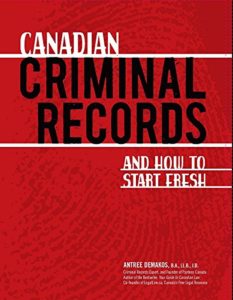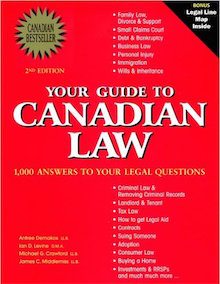An act of violence, especially in the moment that it occurs is a very simple incident. However, once things are over, and it’s time to look at the consequences of that moment of violence, that’s when things become complicated. Violence is never tolerated in Canada, but the degree to which it is condemned or punished varies quite a lot. There’s a big difference between violence that ends with just general public disapproval and violence with consequences that need to be addressed by the Canadian legal system.
So how does it work? That’s what we’re here to at look today, with the charge of “assault” and the many ways it is handled in our country.
What’s an Assault Charge?
Assault is one of the more serious violations a Canadian can commit, and is classified as a criminal act, which means it will be tried in court. If a conviction is secured, it may result in a criminal record, complete with fingerprint records and other legal processing.
The basic definition of assault in Canada is the intention to apply force to someone else in a direct or indirect manner, without that person’s consent. This is a very important point to note; the threat of assault is all that is required for an assault charge to be legally given. Actual injury does NOT have to occur in order for an assault charge to occur. The most important points of an assault charge are that the person being charged had direct intent to inflict harm, and that the person being harmed did not give consent.
For context, this means that in the case of a typical hockey game, athletes who are body-checked or throw their gloves down and fight amongst each other cannot be charged with assault, or sue each other for personal injury, even though acts of violence are clearly involved. These athletes gave their consent the moment they put on the equipment and stepped onto the rink. On the other hand, a person walking down the street that is suddenly, randomly struck in the face is a victim of assault, and the assailant would be criminally charged.
But even once we’ve pinned down the basic terms of what an assault is, there are still different types of assault in Canada, that have different weights in the eyes of the law.
Simple Assault
This is the most basic type of assault charge in Canada, and, at this level, can be prosecuted in two ways. If someone is charged with simple assault as a summary conviction, this is the less severe of the two charges, and can actually be processed directly by a judge with no need for a jury or a jail sentence. However, in more severe cases of simple assault, it can be treated as an indictable offense, which will require a more formal court process.
Assault Causing Bodily Harm
When notable injuries occur, a charge can be stepped up to causing bodily harm. It can still be prosecuted two ways, with a summary conviction and a maximum penalty of 18 months in jail, or, if it is prosecuted as an indictable offense, up to 10 years in prison.
Assault with a Weapon
Assault with a weapon is exactly what it sounds like. This is an act of violence or a threat of violence in which a weapon is used, such as a gun, knife, or other implement. Like the bodily harm charge, this can also be prosecuted as either a summary conviction or indictable offense with similar maximum jail sentences.
Aggravated Assault
This is a more serious type of assault, usually resulting in serious, potentially life-long crippling injuries, or a real danger of death for the victim. Aggravated assault is always treated as an indictable offense, with a maximum sentence of 14 years in prison.
Sexual Assault
When non-consensual sex is also involved with a threat or act of violence, it becomes sexual assault. Like assault, this has both summary conviction and indictable offense variations, with 18 month and 10 year maximum sentences based on the charge.
Sexual Assault with a Weapon/Threats/Bodily Harm
More severe versions of sexual assault, these are charged in a similar fashion depending on circumstances. There are both summary conviction and indictable offense sentences. Maximum punishments range from 18 months to 10 years of jail time.
Aggravated Sexual Assault
As with aggravated assault, this means that there were far more serious consequences and/or injuries for the victim, and is always tried as an indictable offense. Should a weapon be involved, such as a gun, the minimum jail sentence in the event of conviction is four years.
Assaulting a Police Officer
When acts of violence occur to a police officer, this has its own charge, but is prosecuted in a similar manner to other charges. Depending on circumstances, a police officer assault charge can be a summary conviction, or it can be an indictable offense. It depends on the act.
All assault charges have varying levels of severity, from simple to aggravated. Most of them can also be prosecuted as either the less severe summary conviction or, the more serious indictable offense. The one thing that doesn’t change with any of these charges is that once you’re convicted, you have an entry on your criminal record.






